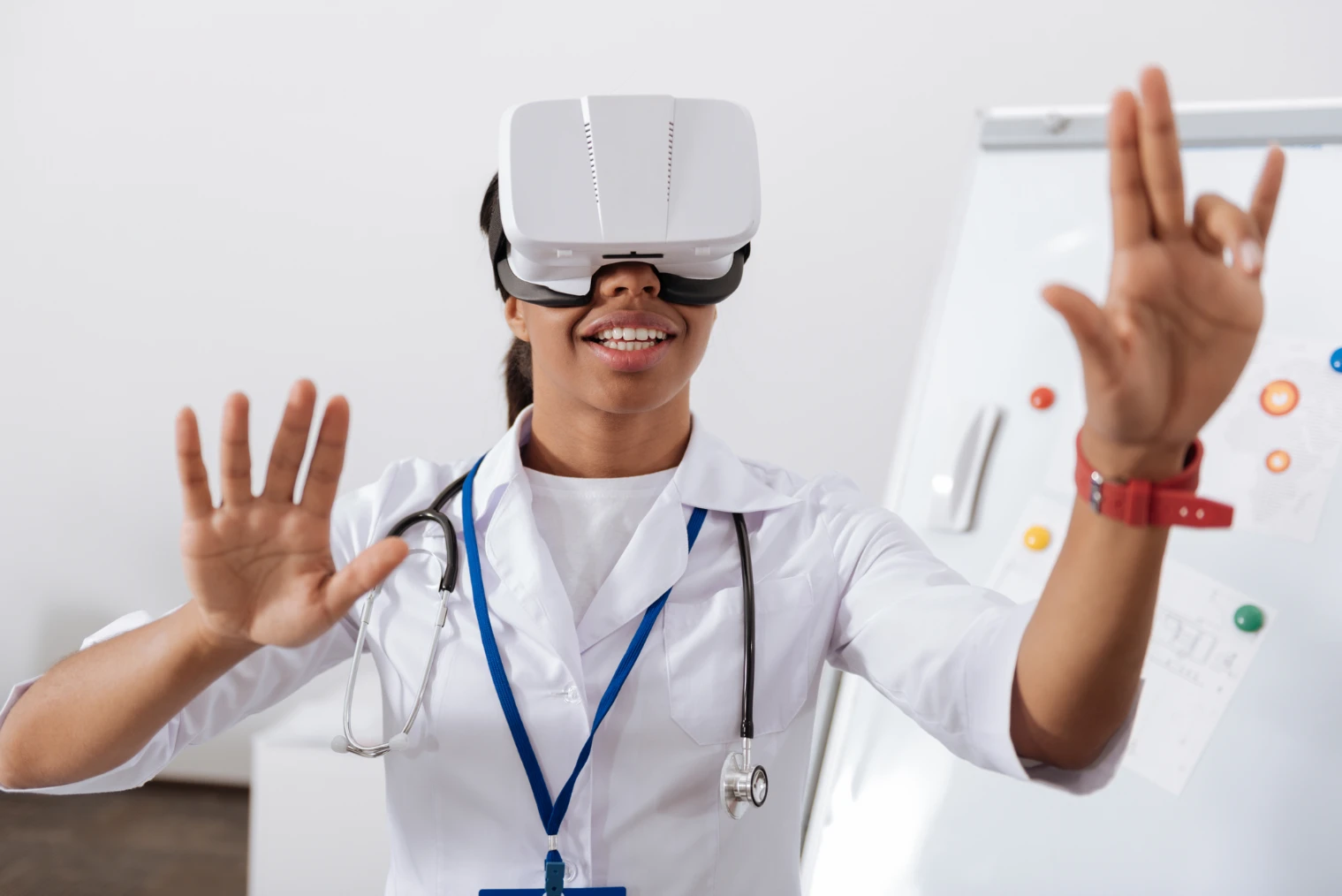In the realm of emergency medical services, the integration of Virtual Reality (VR) into paramedic training programs is revolutionizing how first responders are prepared for the field. VR technology, with its ability to simulate complex, high-pressure scenarios, offers a dynamic and immersive learning experience that traditional training methods cannot match. This article delves into the transformative impact of VR on paramedic education, highlighting its benefits, implementations, and the future direction of this innovative training approach.
The Evolution of Paramedic Training
From Classroom to Virtual Reality
- Traditional Training Methods: Traditionally, paramedic training has relied on classroom instruction, textbooks, and hands-on practice with mannequins or in hospital settings. While effective to a degree, these methods have limitations in simulating the unpredictability and pressure of real-life emergency situations.
- Shift to VR-Based Learning: The advent of VR technology has introduced a new paradigm in paramedic training. By creating realistic, immersive simulations, VR enables learners to experience and navigate the complexities of emergency care in a variety of settings without the real-world risks.
Core Components of VR-Based Paramedic Training
Building a Comprehensive Learning Environment
- VR Equipment and Setup: Essential VR equipment includes headsets, controllers, and software that create a fully immersive training environment. These tools enable trainees to interact with their surroundings in a way that closely mimics real life.
- Simulation Scenarios: VR software developers have designed a wide range of emergency scenarios, from traffic accidents to mass casualty events, each tailored to teach specific skills and decision-making processes.
- Interactivity and Immersion: The key to VR’s effectiveness is its interactivity and the depth of immersion. Trainees can perform tasks, make decisions, and see the consequences of their actions in real-time, enhancing learning through experience.
Advantages of VR in Paramedic Education
A Leap Forward in Training Efficacy
- Realistic Practice without Real-World Risks: VR provides a safe platform for practicing emergency response techniques, allowing trainees to hone their skills without the risk of harming actual patients.
- Skill Development and Retention: The immersive nature of VR aids in better skill retention and confidence-building, as trainees can repeatedly practice scenarios until they achieve proficiency.
- Scalability and Cost Efficiency: Once developed, VR programs can be scaled and distributed across training centers at a lower cost than traditional training, which often requires expensive equipment and facilities.
Implementations and Success Stories
VR in Action: Shaping the Future of Paramedic Training
- ParaVR and Other VR Training Simulators: Initiatives like ParaVR have gained recognition for their innovative approach to paramedic training, demonstrating significant benefits in skills maintenance and emergency preparedness.
- University-Based VR Training Initiatives: Institutions like Kingston University and St George’s have established VR training centers, providing students with access to cutting-edge simulation technologies that prepare them for real-world challenges.
- Feedback from Trainees and Educators: Positive feedback from both students and instructors underscores the value of VR in enhancing the learning experience and outcomes in paramedic training.
Overcoming Challenges
Navigating the Roadblocks to Widespread Adoption
- Technical and Financial Barriers: The initial investment in VR technology and content development can be substantial. However, long-term benefits and cost savings in training resources may outweigh these upfront costs.
- Integration into Curriculum: Effective integration of VR training requires careful planning and curriculum adjustment to ensure that it complements traditional learning methods and meets educational standards.
Future Directions and Potential
Expanding Horizons in Paramedic Education
- Technological Advancements: Ongoing advancements in VR technology promise even more realistic simulations, including better haptic feedback mechanisms and AI-driven scenarios that adapt to trainees’ actions.
- Expansion and Accessibility: As VR becomes more affordable and accessible, its adoption in paramedic training programs worldwide is likely to increase, setting a new standard in emergency medical education.
- Research and Continuous Improvement: Continued research into the effectiveness of VR training will refine its applications, ensuring that paramedic students are equipped with the skills and knowledge to excel in their life-saving roles.
Conclusion
Embracing VR for a Future-Ready Paramedic Workforce
The integration of VR into paramedic training represents a significant leap forward in educational technology, offering an unparalleled level of realism and interactivity. As we continue to explore and expand its applications, VR stands to not only enhance the quality of paramedic training but also to ensure that future emergency medical responders are better prepared than ever to save lives.
The journey from traditional methodologies to VR-based learning in paramedic education is a testament to the ongoing evolution of medical training. By embracing these advancements, the field of emergency medical services can look forward to a future where paramedics are equipped with not just the knowledge but also the experience and confidence to handle any situation they may face.
Frequently Asked Questions About VR in Paramedic Training
In the rapidly evolving field of paramedic education, the integration of Virtual Reality (VR) technology has sparked interest and inquiries among both practitioners and students. This section aims to address some of the most common questions regarding the use of VR in paramedic training, providing insights into how this innovative tool is reshaping emergency medical education.
How Does VR Enhance Paramedic Training Compared to Traditional Methods?
VR offers a highly immersive learning environment, enabling paramedics to practice and hone their skills in a wide range of simulated emergency scenarios without the associated real-world risks. This hands-on experience enhances skill retention, decision-making abilities, and confidence, which are crucial in emergency medical services.
Can VR Training Simulate All Types of Emergency Scenarios?
While VR technology has made significant strides, it can simulate a vast array of emergency situations with high realism, including traffic accidents, mass casualty incidents, and specific medical emergencies. However, the extent of scenarios depends on the software’s development and the VR equipment’s capabilities.
Is VR Training Accessible to All Paramedic Programs?
Accessibility to VR training varies depending on the program’s resources and commitment to integrating technology into their curriculum. While some leading institutions have already adopted VR, others may face financial or logistical barriers. As VR technology becomes more affordable, its adoption is expected to grow.
Does VR Training in Paramedic Programs Have Any Limitations?
While VR is a powerful training tool, it cannot completely replace hands-on clinical experience. Real-world patient interaction and the tactile feedback from performing actual procedures are critical components of paramedic training that VR currently cannot fully replicate.
How Is VR Training Evaluated for Effectiveness?
The effectiveness of VR training is evaluated through various methods, including performance metrics within the VR environment, feedback from trainees and educators, and comparative studies assessing skill retention and transferability to real-world scenarios.
What Future Developments Are Expected in VR Paramedic Training?
Future developments may include more sophisticated simulations with enhanced interactivity, the incorporation of artificial intelligence to adapt scenarios to the trainee’s skill level, and broader integration of VR into paramedic education programs worldwide.
By addressing these frequently asked questions, we aim to shed light on the potential and practicalities of incorporating VR technology into paramedic training, ensuring that future emergency medical responders are better prepared for the challenges they will face in the field.
References
This selection of references provides a solid foundation for further exploring the integration of VR technology into paramedic training programs, reflecting the latest research, practices, and technological advancements in the field.
- National Registry of Emergency Medical Technicians (NREMT): The NREMT offers resources and information that can help integrate VR into paramedic certification and continuing education.
- University of Sheffield – School of Health and Related Research (ScHARR): ScHARR conducts research on the effectiveness of VR in medical training, offering insights into its application in paramedic education.
- Centers for Disease Control and Prevention (CDC) – Emergency Responder Health Monitoring and Surveillance (ERHMS): The CDC provides guidelines that can be enhanced with VR training to prepare paramedics for health and safety in emergency responses.
- SimX: Offers a comprehensive VR training platform for first responders, including paramedics, showcasing the practical application of VR in emergency medical training.
- MDPI – Applied Sciences, Special Issue on Virtual Reality Technologies in Education: This collection of research articles explores the broader application of VR technologies in education, including paramedic training.

Jeromy VanderMeulen is a seasoned fire service leader with over two decades of experience in emergency response, training, and public safety management. He currently serves as Battalion Chief at the Lehigh Acres Fire Control & Rescue District and is CEO of the Ricky Rescue Training Academy, a premier provider of online and blended EMT and firefighter certification programs in Florida.
Jeromy holds multiple degrees from Edison State College and the Community College of the Air Force, and is pursuing his MBA at Barry University. He maintains top-tier certifications, including Fire Officer IV, Fire Instructor III, and Fire Inspector II, and has served as a subject matter expert for a court case. He is a member or the Florida Fire Chiefs Association.
Jeromy also contributes to state-level fire safety regulation and serves on several hiring and promotional boards.

